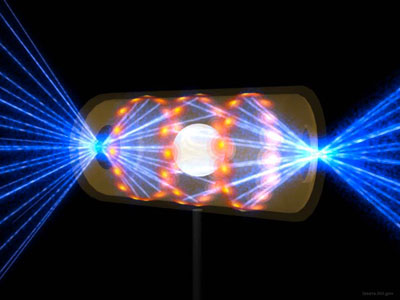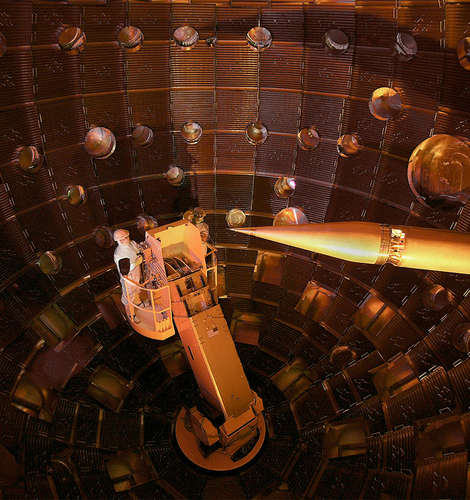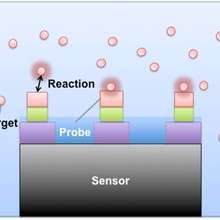The world’s largest laser is located at the Lawrence Livermore National Laboratory in Livermore, California, USA. Housed in the National Ignition Facility, or NIF, the NIF laser is actually made up of 192 laser beams which are focused onto a small target containing a mixture of deuterium and tritium. The goal of focusing all of this laser power is to convert the deuterium and tritium (DT) into Helium molecules through a fusion reaction.
The NIF laser was on schedule to demonstrate this reaction by the end of 2012, and a successful ignition reaction would be an important milestone on the way towards a new paradigm of power generation, known as the Laser Inertial Fusion Energy (LIFE) project.
Powerful and renewable
Currently in the theoretical stage, a LIFE power plant uses the energy of many laser beams focused on DT fuel targets, which are surrounded by a lithium-based coolant. After the fusion reaction occurs, the heat released is absorbed by the coolant, which is then cycled through a heat exchanger. The extracted heat can then be used to power a steam (or other hot gas) turbine and be converted into electrical power.
A fully operational LIFE power plant has the potential to produce energy gains of 25- to 35-fold, so a plant run by a 10-20 MW laser would produce 2000-5000 MW of thermal power. After the initial ignition, a LIFE power plant would therefore be able to produce enough energy to power itself in addition to supplying power to the electrical grid.
This astonishing energy gain is thanks to the conversion of a small amount of matter into energy according to Einstein’s famous equation E=mc 2. And as an added bonus, the free neutrons released by the fusion would react with the lithium in the coolant to create more tritium, which can be used to make more targets, thus creating a closed fuel system.

Green and safety benefits
The benefits of a system of LIFE power plants are numerous. The by-product of the fusion reaction is helium gas, so fusion does not produce nuclear waste like traditional nuclear fission reactors do. In addition, the LIFE reactor does not generate heat when it is not operational, so there is no possibility of a “meltdown”, nor does the reactor need cooling in the event of a shutdown. And because the required amounts of tritium fuel are so small, an accidental spill would have no negative impact on the environment.
While a market system of LIFE power plants is still years away, the program is on track to demonstrate the first operational LIFE plant by the mid-2020s with a fleet of LIFE plants slated to begin supplying the electrical grid with power by the late 2020s.






